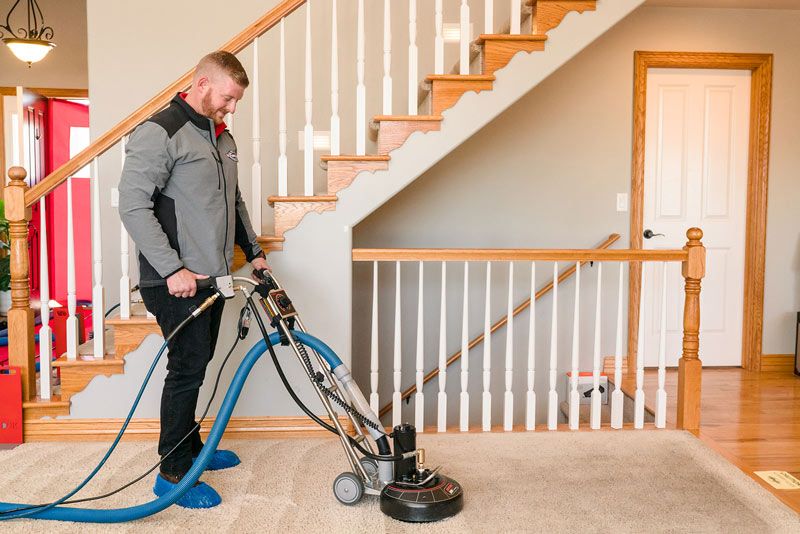The Ultimate Overview to Professional Carpeting Cleaning Techniques for a Fresh and Healthy And Balanced Environment
In the quest of a meticulously preserved interior setting, the significance of utilizing specialist carpeting cleaning methods can not be overemphasized. From recognizing the intricate nature of various rug fibers to understanding the art of reliable spot removal, this guide serves as a sign of expertise for those looking for to boost their cleaning practices.
Comprehending Rug Fibers
To efficiently tidy rugs, it is essential to have a complete understanding of the numerous types of rug fibers commonly made use of in household and business settings. The most common types of carpet fibers include nylon, polypropylene, polyester, and wool. Polypropylene, commonly found in indoor/outdoor carpets, is immune and economical to moisture, fading, and mildew.
Pre-treatment and Spot Elimination
Effective pre-treatment and area removal are important actions in the carpeting cleaning procedure to guarantee complete and effective results. Pre-treatment entails using a cleaning option to the carpeting before the real cleansing process.
Prior to starting pre-treatment and spot elimination, it is vital to identify the kind of spots existing on the rug to select the ideal cleansing approach. Common carpet stains like coffee spills, animal mishaps, or ink marks require particular therapies for effective elimination without creating damage to the carpeting fibers.
Warm Water Removal Technique

Once the option is applied, a high-powered vacuum is utilized to extract the water together with the removed pollutants from the rug. The suction power of the vacuum cleaner guarantees that many of the dampness is removed, leaving the carpet moist but not soaking wet. This is essential in protecting against mold and mildew development.
Dry Carpeting Cleaning Techniques
Dry carpeting cleansing strategies make use of specialized substances or powders to clean carpets without the need for excessive moisture. This approach is suitable for situations where marginal drying time is preferred or where standard damp cleaning techniques are not appropriate. The procedure entails using the completely dry cleansing compound to the carpeting surface and making use of a machine with rotating brushes to agitate the compound into the carpet fibers. The compound serves as a magnet, trapping dust, dust, and allergens, which are then vacuumed up in addition to the substance.
Among the essential benefits of completely dry carpet cleaning is the fast drying out time, enabling the carpet to be utilized quickly after cleaning. Additionally, this technique is usually favored for fragile carpetings that may be at danger of damages from excess wetness. Dry cleaning also helps prevent mold and mold growth that can happen in wet settings. While dry cleaning may not offer as deep of a clean as wet methods, it is a sensible service for regular upkeep and place cleaning in between even more extensive cleansing sessions.
Post-Cleaning Upkeep Tips
Following an extensive carpeting cleansing session, implementing proper post-cleaning upkeep suggestions is crucial to extend the sanitation and freshness of your rugs. To maintain the immaculate problem of your rugs, begin by enabling for adequate drying out time before walking on them.
In case of spills or spots, it is essential to act swiftly. Blot the area with a clean fabric to take in as much liquid as feasible, after that treat it with an appropriate rug discolor remover check it out according to the maker's instructions. Avoid massaging the stain, as this can spread it additionally. Furthermore, rotating furnishings regularly can help stop too much wear and tear on specific areas of the rug. By adhering to these post-cleaning upkeep pointers, you can make certain that your carpets remain fresh, tidy, and in leading condition for longer.
Verdict
To conclude, the Ultimate Overview to Expert Carpeting look these up Cleansing Techniques offers valuable understandings right into keeping clean and healthy and balanced carpetings. By comprehending various rug fibers, utilizing reliable pre-treatment and spot elimination techniques, and implementing approaches like hot water extraction and dry my sources cleaning, individuals can ensure a lively and fresh living environment. With an emphasis on eco-friendly techniques and post-cleaning upkeep, this guide furnishes viewers with the knowledge needed to protect the sanitation and health of their carpetings.
The warm water extraction technique, also known as vapor cleaning, is a widely utilized technique in professional carpeting cleansing for its performance in deep cleaning and sanitizing carpetings.Dry carpeting cleaning strategies use specialized substances or powders to tidy carpetings without the requirement for extreme wetness. The procedure includes applying the dry cleaning compound to the rug surface area and using a maker with revolving brushes to fluster the compound right into the carpet fibers.One of the key advantages of dry carpeting cleaning is the quick drying time, enabling the carpeting to be utilized soon after cleaning.In verdict, the Ultimate Overview to Professional Rug Cleansing Techniques supplies important understandings right into preserving healthy and clean rugs.